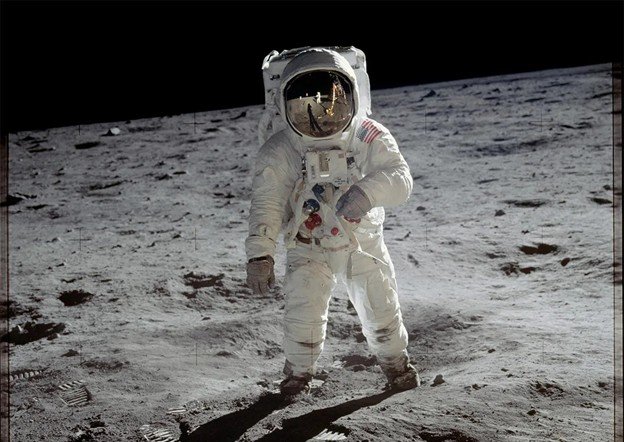Space Travel: A Report on its Transformative History and Landmark Missions
The ascent into space represents one of humanity’s most profound and defining achievements. Born from the crucible of geopolitical rivalry, the endeavor of space exploration has evolved from a contest for national prestige into a global pursuit of knowledge, a catalyst for technological innovation, and a testament to the unyielding human spirit of discovery. The journey from the first tentative orbital flights to the complex robotic exploration of distant worlds chronicles a remarkable progression of ambition, ingenuity, and perseverance. Key missions have served as pivotal markers in this history, not only achieving their immediate objectives but also fundamentally reshaping humanity’s understanding of the universe and its place within it.
The Opening Act: Geopolitical Rivalry and Pioneering Firsts
The dawn of the Space Age was inextricably linked to the ideological struggle of the Cold War between the United States and the Soviet Union. [1] This intense competition provided the political will and financial impetus for unprecedented technological leaps. [2] The starting pistol for this race was fired on October 4, 1957, with the successful Soviet launch of Sputnik 1. [1][3] This 83.6-kilogram polished metal sphere, no larger than a beach ball, became the first artificial satellite to orbit Earth, circling the globe every 98 minutes and emitting a simple radio beep that was heard worldwide. [3][4] The launch sent a political and psychological shockwave across the United States, sparking fears of Soviet technological and military superiority and directly leading to the establishment of the National Aeronautics and Space Administration (NASA) in 1958. [3] The Soviet Union continued its series of early victories on April 12, 1961, when cosmonaut Yuri Gagarin was launched aboard the Vostok 1 capsule, becoming the first human to orbit the Earth. [5][6] His 108-minute flight was an automated affair, a precaution against the unknown effects of weightlessness, and saw him reach an altitude of 327 kilometers before ejecting from his capsule and parachuting safely back to Earth. [5][7] This triumph spurred a decisive American response, culminating in President John F. Kennedy’s 1961 declaration of the audacious goal to land a man on the Moon before the decade’s end, setting the stage for the Apollo program. [8][9]
The Lunar Imperative: The Triumph and Tenacity of the Apollo Program
The Apollo program stands as a monumental feat of engineering and human resolve. While its ultimate success was the lunar landing, its most profound lesson in resilience came from a near-catastrophic failure. The Apollo 11 mission achieved its historic objective on July 20, 1969, when Commander Neil Armstrong and Lunar Module Pilot Buzz Aldrin guided the Lunar Module Eagle to a landing on the Moon’s Sea of Tranquility. [10][11] An estimated 650 million people watched on television as Armstrong took his first steps onto another world, an event that transcended national pride to become a shared moment of human achievement. [12] During their 21 hours and 36 minutes on the lunar surface, Armstrong and Aldrin deployed scientific experiments and collected 21.5 kg of lunar material for analysis back on Earth. [10][13] Less than a year later, the world was again captivated by Apollo, but for entirely different reasons. Fifty-six hours into the Apollo 13 mission in April 1970, an oxygen tank exploded, crippling the Command Module Odyssey more than 320,000 kilometers from Earth. [14][15] The lunar landing was immediately aborted, and the mission transformed into a desperate rescue operation. [16] The crew, commanded by Jim Lovell, took refuge in the Lunar Module Aquarius, using it as a “lifeboat.” [17] Engineers at Mission Control in Houston worked around the clock to solve life-threatening problems, most famously devising a way to build a makeshift carbon dioxide scrubber using materials available on the spacecraft to prevent the crew from succumbing to poisoning. [18] The safe return of the Apollo 13 crew is remembered as a “successful failure,” a powerful demonstration of human ingenuity and grace under extreme pressure that provided critical lessons for future missions. [14][17]
The Robotic Vanguard: Expanding the Frontiers of Knowledge
While crewed missions captured the public imagination, a fleet of uncrewed robotic probes ventured deep into the solar system, revolutionizing planetary science and astronomy. The Voyager program, consisting of twin spacecraft launched in 1977, took advantage of a rare planetary alignment to conduct a “Grand Tour” of the outer planets. [19] The Voyagers provided the first detailed look at Jupiter and Saturn, discovering active volcanoes on Jupiter’s moon Io, evidence of a subsurface ocean on Europa, and the incredible complexity of Saturn’s rings. [19][20] Voyager 2 went on to be the only spacecraft to visit the ice giants Uranus and Neptune. [19] Both spacecraft are now in interstellar space, still returning data from beyond the Sun’s influence. [21][22] In 1990, the launch of the Hubble Space Telescope into Earth’s orbit marked the most significant advance in astronomy since Galileo’s time. [23] Positioned above the distorting effects of the atmosphere, Hubble has provided an unprecedentedly clear view of the cosmos. [24] Its discoveries are legion: it helped to accurately determine the age of the universe, provided conclusive evidence for supermassive black holes at the centers of galaxies, and captured the first visual images of exoplanets. [25][26] Robotic exploration has also transformed our understanding of Mars. NASA has successfully sent five rovers to the Red Planet: Sojourner, Spirit, Opportunity, Curiosity, and Perseverance. [27][28] The twin rovers Spirit and Opportunity, which landed in 2004, were the first to prove that a warmer, wetter Mars once existed. [28][29] The current rovers, Curiosity and Perseverance, are car-sized mobile laboratories searching for signs of ancient habitable environments and collecting samples for a potential future return to Earth. [27]
A New Era: Collaboration, Commerce, and the Return to Deep Space
The post-Cold War era has been defined by a shift from rivalry to international cooperation and the rise of commercial enterprise in space. The most prominent symbol of this collaboration is the International Space Station (ISS), a project involving NASA, Roscosmos, ESA, JAXA, and CSA. [30][31] The first module was launched in 1998, and the station has been continuously inhabited since November 2000, serving as a unique microgravity laboratory for research that benefits life on Earth and prepares humanity for long-duration spaceflight. [30][32] This era has also been revolutionized by private companies like SpaceX, which have drastically reduced launch costs with reusable rocket technology. [33] In 2020, SpaceX became the first private company to launch astronauts to the ISS, signaling a new partnership model between public and private sectors. [34][35] This new paradigm is central to humanity’s next great leap: a return to the Moon and the eventual journey to Mars. NASA’s Artemis program aims to land the first woman and the first person of color on the Moon, establishing a sustainable presence to test technologies for future Martian missions. [36] The program heavily relies on commercial partners, with SpaceX selected to develop the human landing system that will carry astronauts to the lunar surface. [33][36] This fusion of government ambition and commercial innovation marks the latest chapter in our exploration of the cosmos, building upon a rich history of landmark achievements to push ever further into the final frontier. [35][37]



Leave your comment
You must be logged in to post a comment.